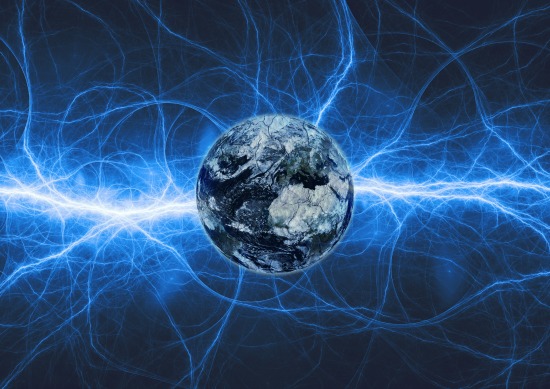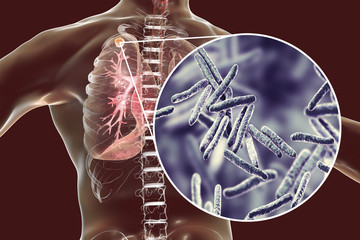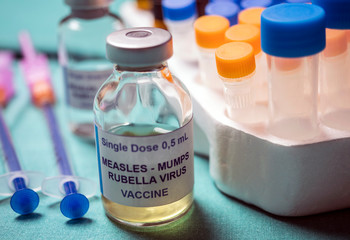This article was originally published by Jeremiah Johnson at Tess Pennington’s ReadyNutrition.com
Tess is the author of The Prepper’s Blueprint: How To Survive ANY Disaster

In the article, “Earth’s Big Freeze Looms as Sun Remains Devoid of Sunspots for Most of 2018, the writer addressed an issue that we are perhaps beginning to see the start of right now.
Throughout the United States, you may notice the change in seasons from summer to fall is happening at a much faster rate than normal. The UK Daily Mail published a piece about this and explains how fall is occurring about a month earlier than it normally begins. This is evidenced in the way deciduous tree foliage is changing its leaf colors almost a month ahead of schedule.
In Montana, I have noticed that the flocks of geese have already started their migrations, and this is also about a month earlier than normal. Other things here locally have occurred, such as drops in temperatures, domestic animals (dogs, cats, and horses) have begun to grow in their winter coats, and normal cycles of plants (such as pine pollen) either haven’t happened or are “off”.
Not to steal the thunder from the cited article, but in a nutshell, the decreases in sunspots mean we are approaching a solar minimum: lower heat produced by the sun in a cycle that occurs every 11 years. This is the kind of thing that (when prolonged) heralds a condition called a “mini-ice-age,” such as the one that occurred from 1645 to 1715. This caused changes in the seasons and food shortages.
10 Ways to Prepare for a Solar Minimum
What can you do about it when the sun changes during this cycle? You can do plenty of things. Let’s go over a few of them.
- Refrigerated Food Supply: I wrote several articles on seasonal changes you should make to your food supply, both refrigerated and in the pantry. Now that winter is approaching, take the majority of your food in the freezer, and cook it. With power gone, it’s better to heat up food that’s already been cooked and eat it than waste time, fuel, and energy cooking it from the raw.
- Pantry: Ensure that your Mason jars are wide-mouthed jars (that take a freeze), as much as possible. Ensure that all of your dry and canned goods are able to be warmed by a wood stove or moved into a room with a fireplace if there should be a power loss.
- Overall Food Supply: this encompasses canned and dry goods, as well as dehydrated, high-protein foods, is the way to go.
- Water: remember that water in the winter under 32 degrees F is ice. Allow for some headspace (about ¼) in your water containers to allow for freezing. Move any water stored that is in danger of being frozen into an area above the freezing temperature. Have a way to take the ice and turn it into the water, and purify it.
- Winter Fuel: For years I have advocated cutting wood in the spring and curing it to cut and section in the fall. You should break out the chainsaws (see my article on them) and if there are fire restrictions prohibiting its use, get out the ax and bow saw for a good workout along with the wood gathering. Any dead trees on your property and any fallen dead timber or standing dead timber (with a permit in a national or state forest) is fair game. Cut it now, while the cutting is possible.
- “Snivel” Gear: that’s what we called it in the Army. I’m talking about my favorite – the Gore-Tex – and all of the polypro long underwear you can pick up. Plan on that Gore-Tex exterior and all layers beneath, top and bottom. Don’t forget the boots! Dry and warm, and as much Thinsulate as you can obtain. Don’t forget good sleeping bags (Extreme Cold Weather bags ) and a good Gore-Tex cover for the outside…enables it to lock in heat yet still exude moisture.
- Vehicles Weatherized and Prepped: Now is a good time to top off all of the fluids, perform any maintenance, and get that vehicle ready to be your tool in the winter. Extra blankets and clothing in the car along with your BOB (bug-out bag) and supplies are necessary. Don’t forget a food supply that is either dehydrated or one that can take a freeze.
- Thermoses and Hot Food Containers: Can’t be overstated. As I wrote in other articles, here in Montana, an auto disaster or a sudden storm that stops you can mean death. You need to have a supply of hot water and a hot meal if you can swing it. Please refer to the articles I wrote on the subject in the past on these techniques.
- Commo: Yes, communications gear. Prep by investing in Motorolas for the family, CB radios for the vehicles and a base station, or long-range radios and a base station as well. Don’t forget to support it all with a generator and solar panels to charge batteries and to run radios from.
- Defense: Archery equipment and firearms are necessary for both hunting game, and also making sure that two-legged hunters don’t make your supplies their game if it hits the fan and there is a prolonged collapse. ‘Nuff said there.
The final thoughts are you need to address this list for the winter and a solar minimum event, as well as continued readiness if things fall apart and a collapse occurs. A solar minimum could also cause a cascading power failure if too much drain is placed on the supply. This could cause catastrophic conditions that you don’t want to happen prior to taking the correct measures. As Ben Franklin termed it, “An ounce of prevention is worth a pound of cure.” He was right. Stay in the game by staying ahead of it, and prepare long in advance of something happening. JJ out!
***
About the Author
Jeremiah Johnson is the Nom de plume of a retired Green Beret of the United States Army Special Forces (Airborne). Mr. Johnson was a Special Forces Medic, EMT and ACLS-certified, with comprehensive training in wilderness survival, rescue, and patient-extraction. He is a Certified Master Herbalist and a graduate of the Global College of Natural Medicine of Santa Ana, CA. A graduate of the U.S. Army’s survival course of SERE school (Survival Evasion Resistance Escape), Mr. Johnson also successfully completed the Montana Master Food Preserver Course for home-canning, smoking, and dehydrating foods.
Mr. Johnson dries and tinctures a wide variety of medicinal herbs taken by wild crafting and cultivation, in addition to preserving and canning his own food. An expert in land navigation, survival, mountaineering, and parachuting as trained by the United States Army, Mr. Johnson is an ardent advocate for preparedness, self-sufficiency, and long-term disaster sustainability for families. He and his wife survived Hurricane Katrina and its aftermath. Cross-trained as a Special Forces Engineer, he is an expert in supply, logistics, transport, and long-term storage of perishable materials, having incorporated many of these techniques plus some unique innovations in his own homestead.
Mr. Johnson brings practical, tested experience firmly rooted in formal education to his writings and to our team. He and his wife live in a cabin in the mountains of Western Montana with their three cats.
(Sign up for our FREE newsletter to get the latest prepping advice, gardening secrets, homesteading tips and more delivered straight to your inbox!)
Tess Pennington is the author of The Prepper’s Blueprint, a comprehensive guide that uses real-life scenarios to help you prepare for any disaster. Because a crisis rarely stops with a triggering event the aftermath can spiral, having the capacity to cripple our normal ways of life. The well-rounded, multi-layered approach outlined in the Blueprint helps you make sense of a wide array of preparedness concepts through easily digestible action items and supply lists.
Tess is also the author of the highly rated Prepper’s Cookbook, which helps you to create a plan for stocking, organizing and maintaining a proper emergency food supply and includes over 300 recipes for nutritious, delicious, life-saving meals.
Visit her website at ReadyNutrition.com for an extensive compilation of free information on preparedness, homesteading, and healthy living.











Were I still in WA state, this article describes the standard way of life regardless of sun cycles. He did forget chains or cables for the vehicle.
One other thing, I only own Standard( manual) transmissions and I own at least one 4WD. Automatics on snow and ice will at worse kill you and at best destroy your car.
30 + years of driving on snow and ice on mountains and steep hills taught me this.
To me, it doesn’t feel like you are driving unless it’s manual transmission. It’s funny to teach a young person how to drive with a clutch. They get so red-faced.
How does one get prepped for cold weather during global warming? How about just do nothing?
One other good thing about a manual transmission.
It is less likely to get stolen as most kids don’t know
how to drive one.
Not so true in my area as most every one has at
least one or knows someone with 4WD and a manual
transmission.
I have two trucks, 4WD with “sticks”.
I love my stick shift. And you are correct; my vehicle is unlikely to get stolen. Also likely that I have to drive it onto the rack to get an oil change–well, at Jiffy lube anyway.
I don’t have a truck but want one. Any advise gladly taken.
More BS from a NON-Expert. Solar min, means cooler temps? I say BS, it was very hot this summer. Also, Solar Panels are more efficient in cooler weather. Yes they produce volts in cooler weather than in hot summer heat. That’s why you never mount solar panels directly on to a flat surface. You need like 5 inches of space under the panels for air circulation. To keep them cool as possible.
a tip for teaching a kid how to drive a clutch…..do it in the dirt. much less killing the engine from chirping them tires. dirt is more forgiving.
bullsit rellik….you’ve never lived in Frasier CO….you don’t know what cold is…..every year…..
I worked grave shift all fall, winter, and spring on a flight line in Minot North Dakota.
I know what cold is.
I was in the Dakotas but a long time ago. Man why live there on purpose? Unless you are deployed to a SAC base, and have no choice?
I grew up in Michigan and lived there until my mid-30s. I also know what cold is and very aware what it can do to a house. Deep frosts can change the soil and shift windows and door jambs. There’s more but people with more experience can explain it all.
I’m still in northern Michigan and I’ve heated WITH wood have a generator and solar panels a well and a CLEAN lake 200 yards from home a prepper and Hunter fisherman was raised in Detroit until 28 can protest me and my wife and grandchildren so I do think we will have a shtf situation i thought I may not LIVE to see if but this makes sense we did get get winter faster this year so keep me in the loop i didn’t hit 60 being dumb.
when i served, minot was the one place NOBODY wanted to be sent to, for that very reason. mids here at GAFB as a 462 could be in the teens, and without parkas and longjohns, it WAS bitter cold…..but at least it warmed up during the day.
#2. Wide mouth mason jar is better for storing honey, as it crystallizes and warming is required to liquify again. The problem is that the middle can remain solid longer than the outer area.
You will probably need to remove it with a spoon.
The wide mouth jar makes it easier to handle.
_
_
Fall isn’t coming sooner to my area of the midwest. It’s been in the mid to high 90’s with heat indexes in the 100’s all week.
https://www.youtube.com/watch?v=tCz8_yW1tXA
If it’s not a bad solar min, then the way our ancestors coped was with cloche gardening. The added protection was made with a semi-hoop of something flexible like a branch, and a screen, clear plastic, a semitransparent cloth, etc then allows the internal temperature to rise. This warms the soil for germination and creating a greenhouse effect.
During pollenation, you remove it to allow self-pollenation by the wind and foster bee pollenation. The bees will manage fine and may be happy as it’s warmer inside the cloche.
In a bad solar min, you get a small new paint brush, and you do the pollenation by hand.
Discarded 2 liter bottles will work. Milk jugs will sort of work.
Smart folks will prepare the soil by putting down black plastic and killing off weeds and hopefully weedseeds, then this makes it easier to till or turn over with a shovel. You might try double digging using the French biodynamic method to encourage root growth.
You can easily remove the plastic from the cloche to mediate the temperature or your plants will go to seed faster if it gets too hot. You may see benefits like less harmful insects like cabbage moths, or they might collect on the plastic and you scoop them off.
Doing that lengthens a normal gardening season. If it’s cold, then it restores a longer normal gardening season. The farther you are to the north, the more a cloch benefits you. Around these parts, when we are lucky we can plant some things by March 1-15 and and then have stuff going as late as November. That’s pretty lengthy versus Montana.
If it’s a bad solar min, we’re in trouble just as when it happened during the mini Ice Age.
I’m going to revisit Mount Vernon (just down the road from me). George Washington did some interesting things with stone walls to capture solar warmth and extend the season. He also built a green house to overwinter certain tender trees (lemon, etc.) and it was heated by a fire with the hot air ducted beneath the greenhouse stone floors so it wasn’t a direct fire heat.
I wanted to visit Montecello this year because Jefferson also had great ideas to extend the growing season. Maybe there’s something online.
Seems like a good idea to learn from those who’ve done this before. They were just coming out of the Maunder Minimum so they would know cold.
Are there any computed temperatures for various parts of the US?
I’m looking for one. It’s complicated by the fact that sometimes when there is a solar min coupled with and increase in volcanic activity, they both then affect the surface temperature.
See.
https://nextgrandminimum.files.wordpress.com/2012/05/gtemps.gif?w=584&zoom=2
Look at the mini Ice Age.
Ask Al Gore,
It is settled science.
They can predict it will be hot in
Houston in August 2090.
and it will be cold in Minot
in January 2091.
as i’m 67 i can assure you neither of those dates will make a difference to me!
you can say that again!
as i’m 67 i can assure you neither of those dates will make a difference to me!
Fall is arriving later than usual where I am, relatively close to the 4 corners. It is hotter and drier than usual for the time of year. It is giving those devoted to the religion of climate change ammunition around here. Things in nature tend to occur in cycles, but these lunatic fanatics are completely closed minded.
Jim,
Given that Fall doesn’t start for 3 days,
hard to say it is late.
Jim and rellik, my brother got married on 2 October 1971. It was 92 degrees that day. Northeast Illinois. The church had just turned off the a/c on October first. It was tough in the tuxedo. It was a fluke. The weather was normal the rest of the year.
Our ancestors called that unseasonably warm period that subsequently returned to normal a “indian summer”.
https://en.m.wikipedia.org/wiki/Indian_summer
I have been keeping an eye on weather events as they relate to agriculture. There have been a large number of them. The overall crop forecasts haven’t reflected the losses especially in wheat. The crop forecasts include the carry-over from the previous years. At the start of this crop year, the Chinese had a considerable amount of wheat stored. They’re expected to have half of the world’s wheat when the harvests come in. They’re not expected to sell any of it abroad. For the rest of the world, the supply is going to be tight. Look for food prices to rise.
https://inews.co.uk/news/long-reads/cargo-container-shipping-carbon-pollution/
A cargo ship from China so you can get your cheap slave labor goods at Walmart produces as much air pollution as 50 million cars!
Let’s save the Earth and BAN international trade. Everybody now.”We are the world. We are the children.”
You see? The globalists are not serious about pollution…because their greed through free trade destroys purt near everything.
What a concept. Producing locally helps Americans, saves the middle class, fosters political stability, cuts poverty, AND pollution. And the bozos then would be happy as it help reduce climate change. Because you sure can’t make the sun or volcanoes to stop their effect on the climate.
DUH!
I have noticed dry leafs about a month earlier here
In VA. I have noticed some bucks out of velvet
earlier than I would have thought.
But I do believe that biological cycles such as migration,
Mating season, changes in the fur is influenced by
hours of daylight as much or more than temperatures.
If only the temps would cool, here in central Florida it is very hot and humid for past mid September.
Same here in Virginia. Today was beastly for September.
hottest September on record here in Middle TN
we got cities all over the usa still hitting near record highs in mid September and we’re about to go into the deep freeze ? gimme a break.
i’m no global warmist and do not believe in warming by carbon dioxide but the solar minimum is going to be very underrated if it does happen.
you’re still going to have hot summers in north America with the possible exception of Canada and the northern states, some poorer than usual harvests but ice in new York harbor isn’t going to happen and a foot of snow in south texas isn’t happening either before the “minimum” is over.
Predicting the weather months in advance is only slightly harder than predicting the lottery.
Due to the large thermal mass around a cove, folks living around one have a natural way that influences local weather patterns. Like Portland Maine for example. The rest of Maine can get very different snow and cold versus Portland.
Around the late seventies, people started using passive solar by simply filling black paited barrels with water. They absorbed the sun and also were near woodstoves and thus they absorbed heat and radiated heat to modulate the temperature.
It’s a great inexpensive way to handle high utility bills.
In a very limited way,you can make a solar air heater. Look up a video. You create a channel inexpensively that is spray painted black, and use something like aluminum cans, and the air that circulates through it creates a warm draft of heated air. Air obviously is not an ideal medium though versus water for temperature transfer.
I am old enough to have experienced several 22 year cycles, three of them. What I’ve noticed is that during the height of solar maximum, the sun is a more focused heat on some days. Solar minimum feels better to me, like a more balanced overall heat. I recall very cold, unusually cold winters; but these events had nothing to do with solar minimum. At least the explanations given for them were absent any mention of solar activity. Any worry over this is misplaced. IMHO
_
In the 1960s ponds in southern NJ froze sufficiently for about 6 weeks per winter to ice skate on.
I love ice skating and skiing. Unfortunantly we have mild winters much of the time. You have to go to a rink and they have to make snow which obviously doesn’t form powder and the runs are short.
I wonder if parents actually take their kids ice skating anymore? Youth ministry routinely organizes both skating and a ski trip.
Do you ever play broomball? That’s crazy and fun. You skid and fall on yer butt and back a lot and it knocks the wind out of you.
Just once I wish I could make a good proper igloo.
That’s how winters were for me when I was a kid in Michigan. Dad always made an ice rink in our backyard every winter. He showed us how to maintain it once we were old enough. It was a common thing in our neighborhood so we had choices. As a result, we kids did the broom ball on wherever the most of us gathered to skate. Some kids had hockey skates and sticks while others had figure skates and brooms. It was all great fun.
In Kentucky, the winters from 1976-1978 were awful with 1977 snowing so much with alternating ice that everything just shut down. For weeks. The Ohio river froze. Crazy people walked on it.
By comparison Maine doesn’t seem to shutdown regardless of how much it snows. It can pile up every single day and accumulate. That was the most shoveling I ever did.
That period of years I was in Michigan and that was when my son was born. I remember the thick ice going up the hospital windows. They kept my son and I partly because of the weather and partly because it was a Caesarean delivery and also because I had no help (relatives, friends, etc.) at home out in the country. After the first day where they insisted I remain abed, I got up and dressed because it was too cold to just lay around; I remember having to haul an IV around for a day or so. I rebounded quite quickly from that birthing. Turns out that’s what they have all Caesarean deliveries do these days (plus the rush to get patients out the door) although at the time my doing so was bordering on scandalous. For me, I just can’t stand doing nothing. Even sitting around from some malady, I have to do something usually handwork from my sewing basket.
The spider lilies in my yard have bloomed within days of the same time as previous years.
It’s still in the 80s here. Tomorrow is supposed to be down to 82, but after that, it’s back to the upper 80s.
The Old Farmer’s Almanac predicts we’ll have a warmer than average winter.
Can’t wait for the frost on the pumpkin.
It is not just solar minimums. The El Nino and La Nina ocean current phenomena also effect weather patterns in the Northern Hemisphere. Here in Winterfell(North ID), the prediction is for less snow and more rain. I’ll believe it when it happens. After moving here over three years ago, I am prepped for anything.
The eleven year cycles are the best known but there are others, each having a different time period. Some are over decades and some centuries. The one of most concern is for two hundred years. The eleven year cycles overlay the longer cycles. The “grand solar minimum” are associated with the little ice ages in history. At the risk of sounding like Al Gore or Chicken Little, we seem to be close to the start of one based on what has happened in the past. There will still be regions that are less affected than others;closer to the equator is better usually. It is the grain producing regions that are of most concern. This thing repeats on a cyclical basis.
About 2005 or so, there was concern about laptops and being able to adequately cool the main processor and the seperate graphics processor in the future as they grow more complex. These use a combination of a heat sink with non-electrically conducting heat sink paste and a fan and a metal grid to hopefully keep it cool.
Anyway since fluid is a better conductor of temperature than air (see above) they immersed the computer in mineral oil. Well there was remarkable cooling as a result making the processors work extremely well. And mineral oil doesn’t conduct electricity.
I reckon you could use that property of nonconducting fluids to achieve maximum thermal efficency in all kinds of heating and cooling especially if it turns colder during a solar minimum. It’s genuinely an engineering question and there be some old school way to apply this homeowners.
Microcenter sells a desktop, the PowerSpec model (x600, I think), that goes for $6k. It has the oil cooling. It also looks amazing because it has a clear side where you can see the colors change. Saw it in person when I had to suddenly do an upgrade this past spring while shopping for a new desktop (tired of laptops crashing every 2 yrs), I did not go for a high end machine.
I live in northern Minnesota had frost over a week ago and sunday it was 87 then on Monday it got up to only 58 . Just had a local logger bring me 10 cords of hard wood I am not going to be cold this winter lots off color in the trees already
Big Red, that is a lot of wood!
In WA state on the side of a mountain,
I went through about 3 cords
per winter. 4 bedroom Manufactured home.
Electric heat only came on when house
temps got down to 50. Fire in the Buck wood
stove rarely went out November to April.
hey rellik this will last me over 2 yrs and that’s in a 2500sq,ft.hose and temps. down to 30 plus below zero and my better half likes it warm.
I am in the UK, and the fall/autumn turning of the leaf colour to golden colours has not happened yet.
For once its been a great summer, lots of sun from the end of the first week in May to the beginning of August.
Not seeing what is claimed by this piece -sorry.
Shit
You all can freeze if you want to. I left Wisconsin a year ago and now live 3 degrees below the equator in Ecuador. for the last year it never dropped below 50 degrees and did not break 80. No need for heat or air conditioning. Food grows 365 days a year and the taxes on my 16 acre farm were $38… yes $38. Ecuador has been on the top 5 places on the planet to retire to for years, usually in the top 3.I love it here and the weather forcast for the next year is 75 and partly cloudy with a low dipping into the lower 60s. Clean air, clean water and good food growing everywhere here in the Andes about an hour sw of Cuenca which is one of the top 5 cities to retire to. Get out of North America is all I have to say.